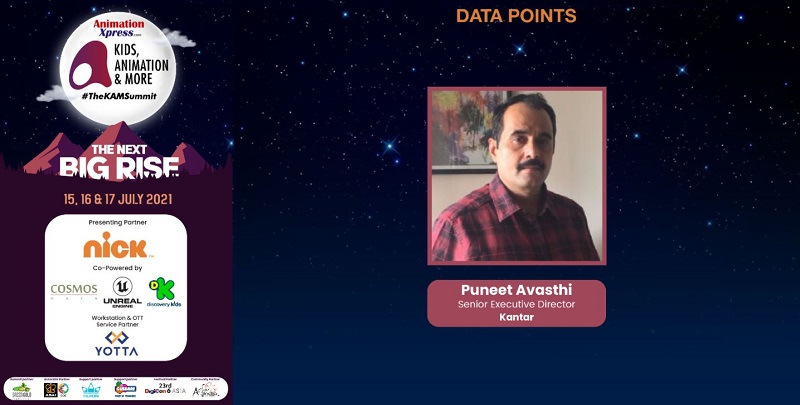
Children have become an important consideration for marketers when they plan promotions for products/services meant for family consumption. Marketers are weighing in on buying decisions on products and services beyond those meant for children.
At KAM Summit 2021’s Data Points session, Kantar senior executive director Puneet Avasthi decoded what today’s children are all about and how do the little ones connect with the world around them in the current times. He dived deep into what kind of idioms and personality type do they actually aspire for and how technology impacts their decision-making.
Decoding the digital native kid, Avasthi went on to explain how the Indian kid has evolved. He mentioned that the children are probably more tech-savvy than most of the other members of the house, hence a larger influence. “Kids are the key pillars of growth for a variety of digital sectors, including entertainment, edutech, gaming and influence that extends well beyond.”
He further added, “Kids highly influence food buying as well as what they eat, followed by household items and kids’ products. Parents allow the kids to dictate their media consumption. More than a third of TV viewing kids buy the product seen in the ad, if they like the ad.”
75 per cent of the time, the child’s sanction and permission is non-negotiable when shopping for them. Parents today dare not pick anything for their children without the approval of their kid. In circumstances where something was picked up without the child’s approval, they did not use the product at all in most cases. The emotional state of the kids is linked to their performance. Doing well in studies/sports makes them happy, confident, and proud; while doing bad in studies makes them sad.
Instead of the child seeking approval, parents are seeking approval when it comes to buying anything for the house, like furniture. So, the shopping decisions of the kids these days go beyond food, clothes, and stuff meant for them. Parents rely a lot on children and the choices of the young ones go beyond simply picking products based on their favourite colour or cartoon. They decide what they like on the basis of their exposure to technology and the advertisements they watch. Avasthi went on to say that if at all there is a negotiation, “the child is the winner clearly.”
33 per cent of the purchase decisions concerning buying cellphones are taken by kids, as Avasthi’s survey pointed out. Similarly, in 33 per cent of the cases, the little munchkins end up influencing their family’s decision to buy TV sets as well.
“Indian kids like affectionate and intelligent characters like Doraemon and Chota Bheem. So, if you want to aim at mass appeal for their age-group, do more sober, simple, and intelligent characters. Communicate with the kids. They are the buzz creators with lots of positivity and influence,” pointed out Avasthi.
Kids prefer ads that are reality-based. Although kids like ads with their favourite celebrities, they may not always like the product. But, an interesting ad generates word of mouth. Although fitting in with a group of friends is important for more than half the kids, the majority of them don’t want to copy or blindly follow their friends. They are individualistic.
“Kids are very impressionable. One in three kids end up buying what they see in advertisements online or on television. Children have a strong influence on purchase of high value items for the household, besides merchandise they need,” Avasthi concluded.
You can watch the session from 50:02

